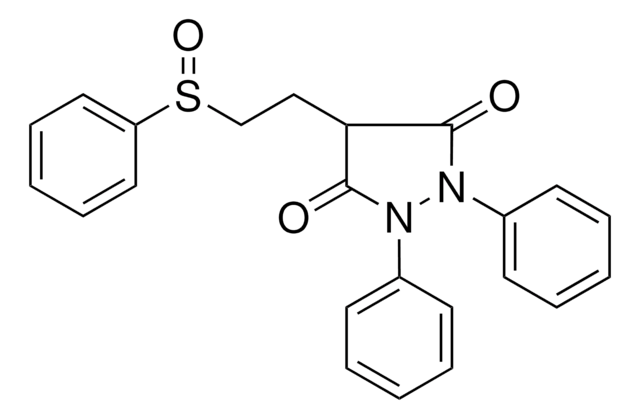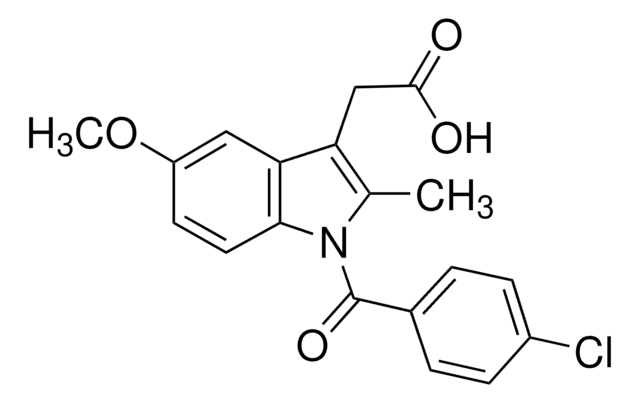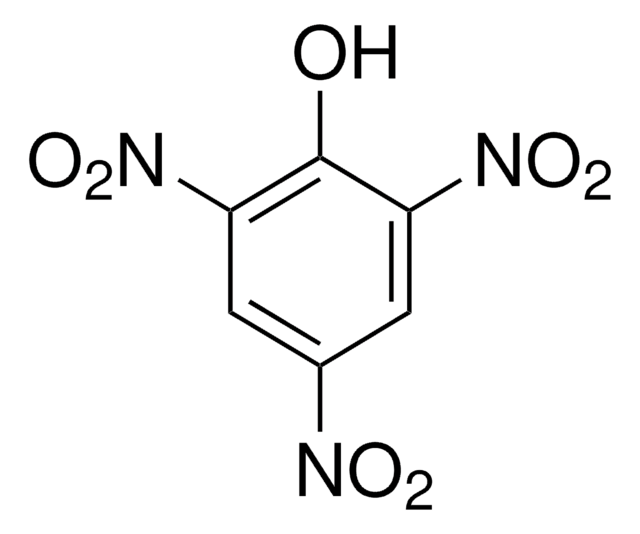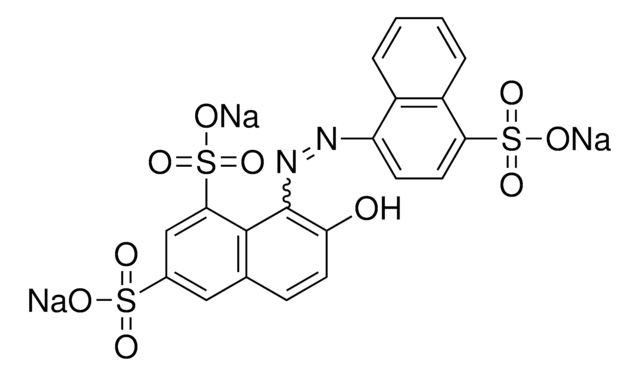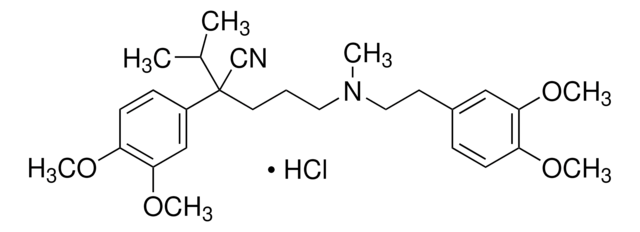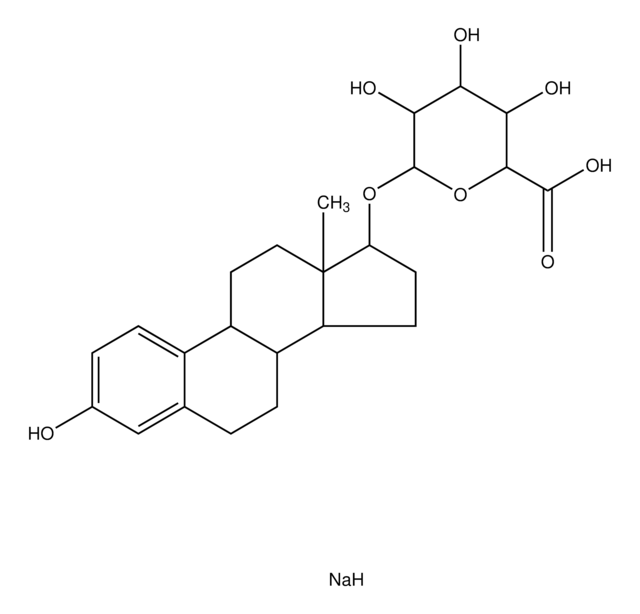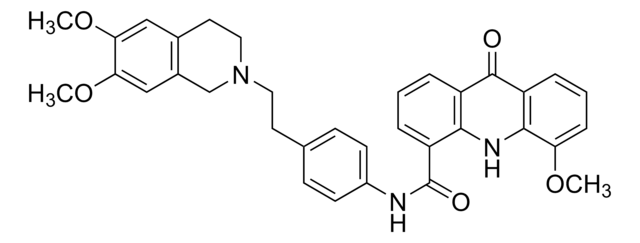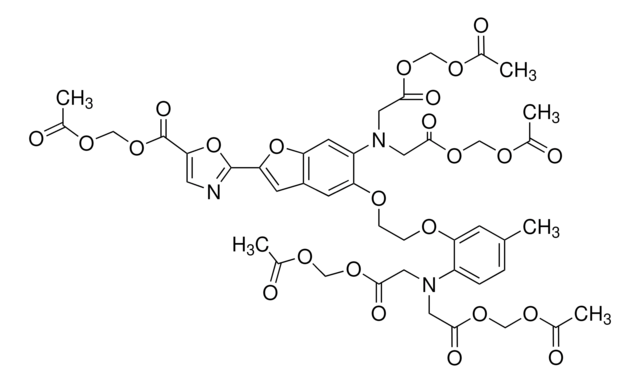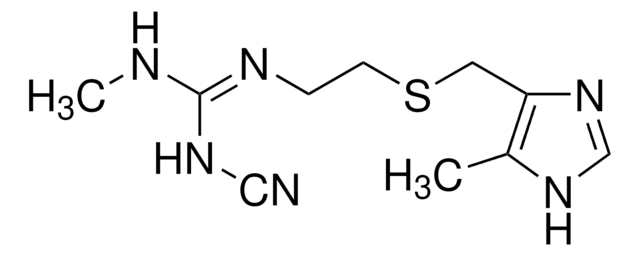P8761
Probenecid
≥98% (NaOH, titration), powder, uricosuric agent
Synonym(s):
p-(Dipropylsulfamoyl)benzoic acid
About This Item
Recommended Products
product name
Probenecid,
Assay
≥98% (NaOH, titration)
Quality Level
originator
Merck & Co., Inc., Kenilworth, NJ, U.S.
SMILES string
CCCN(CCC)S(=O)(=O)c1ccc(cc1)C(O)=O
InChI
1S/C13H19NO4S/c1-3-9-14(10-4-2)19(17,18)12-7-5-11(6-8-12)13(15)16/h5-8H,3-4,9-10H2,1-2H3,(H,15,16)
InChI key
DBABZHXKTCFAPX-UHFFFAOYSA-N
Gene Information
human ... SLC22A11(55867) , SLC22A6(9356) , SLC22A8(9376)
Looking for similar products? Visit Product Comparison Guide
Application
- as a component of phenol red free Hank′s buffer for Intracellular Ca2+-mobilization assay
- as a component of calcium sensitive dye for calcium mobilization Studies
- as a supplement in Hank′s balanced salt solution (HBSS) assay buffer
Biochem/physiol Actions
Features and Benefits
Signal Word
Warning
Hazard Statements
Precautionary Statements
Hazard Classifications
Acute Tox. 4 Oral
Storage Class Code
11 - Combustible Solids
WGK
WGK 3
Flash Point(F)
Not applicable
Flash Point(C)
Not applicable
Personal Protective Equipment
Certificates of Analysis (COA)
Search for Certificates of Analysis (COA) by entering the products Lot/Batch Number. Lot and Batch Numbers can be found on a product’s label following the words ‘Lot’ or ‘Batch’.
Already Own This Product?
Find documentation for the products that you have recently purchased in the Document Library.
Customers Also Viewed
Articles
Protein-based drug transporters are found in most tissues including liver, kidney, intestine, and brain. These transporters are particularly important in cancer treatment and multi-drug resistance research. Understanding the specific mechanisms of tumor cell transporters is becoming an essential aspect of chemotherapeutic drug design.
Related Content
Discover Bioactive Small Molecules for ADME/Tox
Our team of scientists has experience in all areas of research including Life Science, Material Science, Chemical Synthesis, Chromatography, Analytical and many others.
Contact Technical Service


